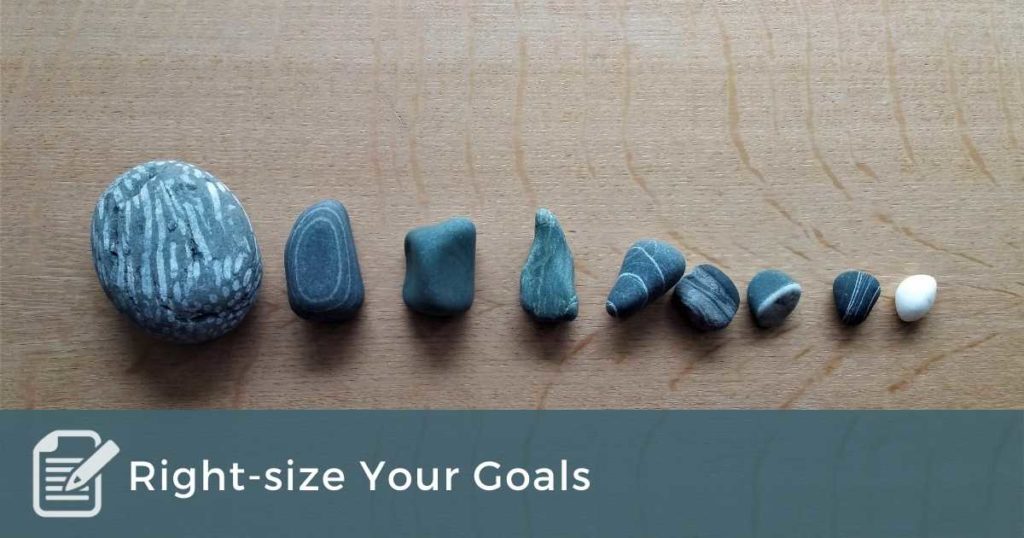You’ve probably heard that goals should be SMART – specific,
measurable, action-oriented, realistic, and time-sensitive. That sounds smart. But one thing that lots of people miss is
that goals need to be challenging.
A great goal should feel attainable, but only with
effort. The question is, “How much
effort?” Like Goldilocks, we don’t want
goals that are too challenging (I’m going to climb Mount Everest!) because we
will quickly lose heart and give up, and we don’t want goals that are not
challenging enough (I’m going to climb off the sofa and get a soda!) because we
will be unmotivated or we will reach the goal without having really
accomplished anything.
My friend Bill grew up in Daytona Beach near the dog tracks
(I’m sure he never wagered). The dogs
that race there chase a toy rabbit that runs on a rail. The speed of the rabbit is controlled so that
the rabbit is just out of reach: too far
away and the dogs will not run, too close and the dogs will catch it and
realize it’s not real and stop running.
The goals in our lives function like that toy rabbit: they
motivate us to give life our very best. And to get our very best, our goals need to be big enough to stretch and
challenge us, but not so big to overwhelm us or cause disillusionment.
So here are five questions to help you right-size your
goals:
1. How well does the time and energy needed
to reach this goal seem to match the benefit I will receive from having reached it? Be sure that you flex the realistic part of your SMART goal here and get
clear how much time and energy your goal will require. Working on something for a year with only
minor benefit is not a good idea; there needs to be a reasonable cost/benefit
match.
2. What else in my life will I need to give up or rearrange in order to reach
this goal? If your answer is “nothing”
or “not much” then your goal is too easy and will not stretch you. Really, the term “stretch” is all about what
else in your life will need to change in order to reach the goal.
3. What would this goal look like if it were 10% bigger/smaller? Try on several sizes of your goal to find the
one that fits you best. You can change
the size of the goal by adjusting such elements as the timing, the scope of the
goal, and the resources leveraged.
4. What are the internal and external results of pursuing and reaching the goal? Sometimes we just want to get
to the end – we want to lose the 10 pounds or write the book or get into that
program. These are external
results. Other times, we pursue a goal
in order to boost our character or prove something to ourselves. Mapping the results will help you better
identify whether it’s reaching the goal or pursuing the goal that will matter
most to you.
5. How motivated
am I? Ah, and now we come to the
holy grail of all coaching questions. Be
careful with this one. Sometimes we get
so high on motivation that we set goals that will stretch us beyond our ability
– either breaking us or causing our motivation mojo to deplete well before
reaching our goal. Even dogs at the
track will not chase the rabbit forever. Make sure your finish line comes sooner than an empty motivation tank.
Now, go set a goal or two (or three if you’re really
motivated) and be sure to right-size them.



